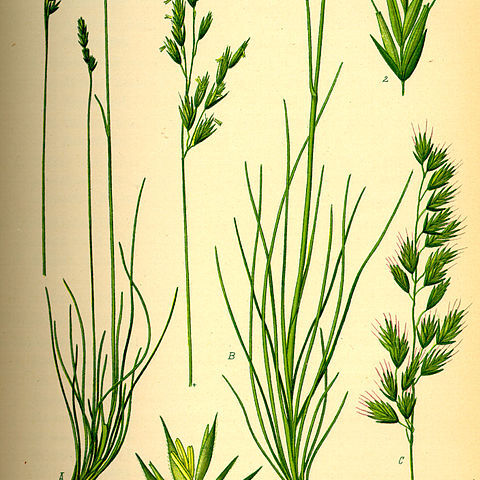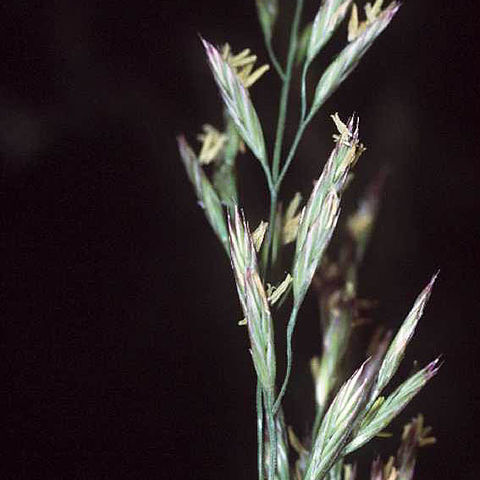Perennials, tufted, shoots extra-or intra-vaginal. Leaf sheath margins usually free, rarely connate, sometimes with auricles; leaf blades folded to conduplicate and filiform, sometimes flat; ligule membranous. Inflorescence an open, contracted or spikelike panicle. Spikelets with 2 to several florets, uppermost floret usually reduced; rachilla usually scabrid, rarely smooth or pubescent; disarticulating above glumes and between florets; glumes usually unequal, herbaceous to scarious, rarely subleathery, lower glume often small, 1-veined, upper glume usually shorter than lowest lemma, 3(–5)-veined; lemmas usually similar in texture to glumes, often subleathery at least with age, usually ± laterally compressed but not keeled, rounded on back at least toward base, usually 5-veined, veins sometimes prominent, apex acuminate, entire or notched, awned or awnless; palea subequal to lemma, keels scabrid, rarely smooth. Stamens 3. Ovary glabrous or hairy on top. Caryopsis oblong or linear, usually ventrally sulcate, usually free from lemma and palea, hilum long-linear. x = 7.
Spikelets 2–15-fld, the rachilla disarticulating above the glumes and between the lemmas; glumes narrow, unequal, 1–3(–5)-veined, usually shorter than the lemmas; lemmas membranous or often indurate, rounded on the back, obscurely 5-veined, acute or acuminate, usually awned from the tip, sometimes awnless; upper lemmas considerably reduced; palea about equaling the lemma; stamens 3; grain obovoid-oblong; open-pollinated, tufted perennials; infl an open to contracted panicle. 200+, widespread in temp. and cool regions.
Densely tufted perennials with flat or loosely involute blades and narrow or open panicles. Spikelets few-to several-flowered, the rachilla disarticulating above the glumes and between the florets; glumes narrow, unequal, the first 1-nerved, the second 3-nerved; lemmas rounded on the back, awnless or awned from the tip; palea not adhering to the caryopsis.
Lemmas lanceolate, (3-)5-(7)nerved, herbaceous to subcoriaceous, dorsally rounded or rarely somewhat keeled towards the apex, usually awned or with an awn-point from the apex, rarely awnless or awned dorsally from below the apex.
Caryopsis usually elongate, usually free but tightly enclosed by the lemma and the palea, dorsally compressed and grooved; embryo small, not reaching 1/3 the length of the caryopsis; hilum basal.
Paleas as long as or slightly shorter than the corresponding lemmas, 2-keeled, usually with the apex 2-dentate, thinly membranous or hyaline, with the keels scaberulous or ciliolate.
Spikelets several-many-flowered, laterally compressed, pedicelled, solitary; rhachilla slender, slightly elongated, disarticulating above the glumes and between the florets.
Florets clearly exserted from the glumes, hermaphrodite but the uppermost one usually reduced; callus small, annular, usually glabrous.
Glumes subequal, sometimes the inferior smaller, herbaceous to subcoriaceous, keeled; the inferior 1-3-nerved; the superior 3-nerved.
Ovary glabrous or sometimes with the apex pubescent; styles 2, laterally exserted.
Leaf-laminae folded or convolute, often setaceous, rarely expanded.
Ligule scarious or sometimes membranous, usually entire.
Lodicules 2, entire or asymmetrically 2-lobed.
Inflorescence an open or contracted panicle.
Caespitose perennials, often rhizomatous.
Stamens 3.


